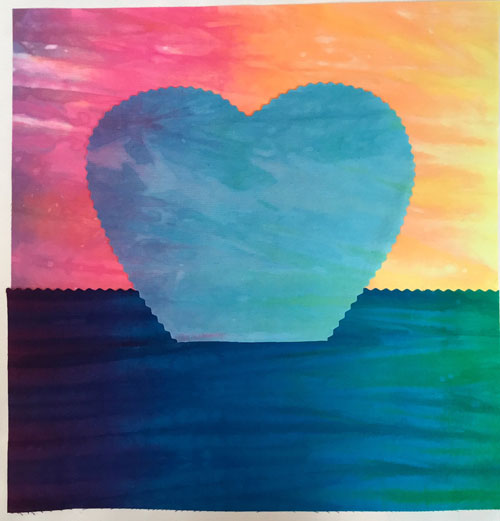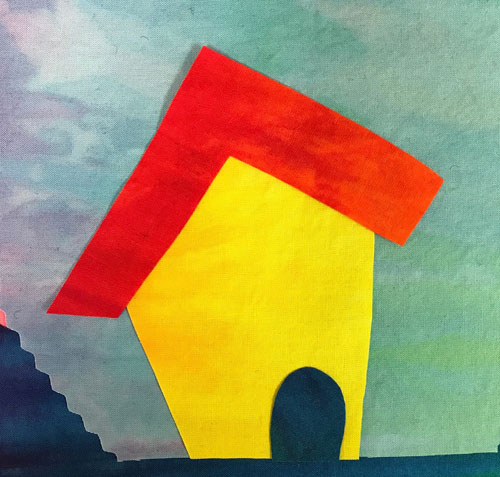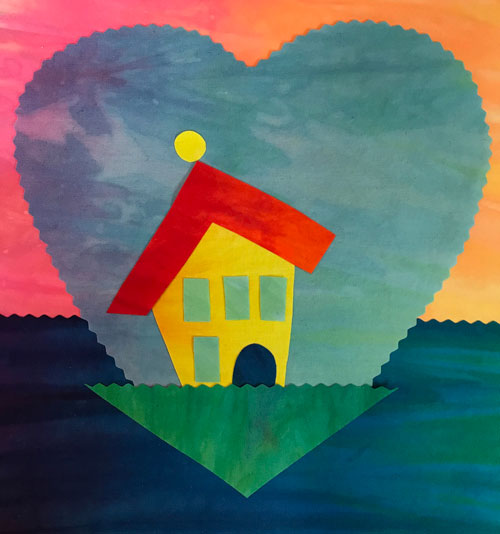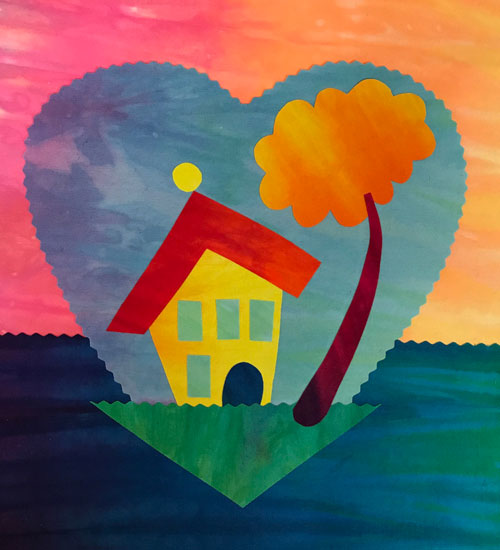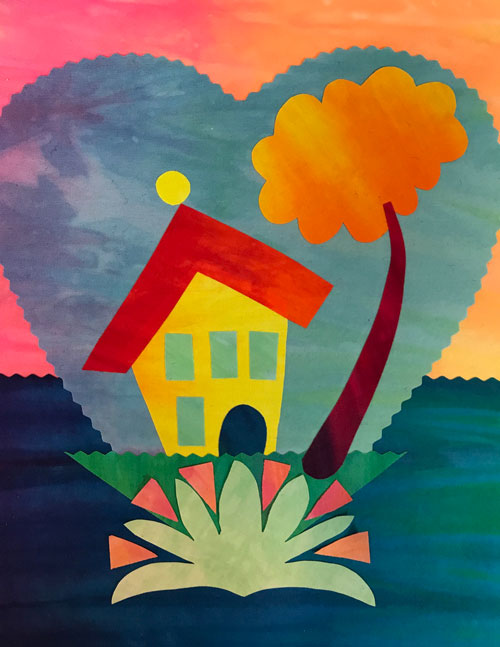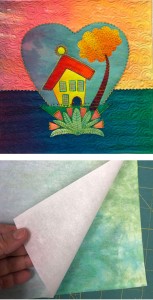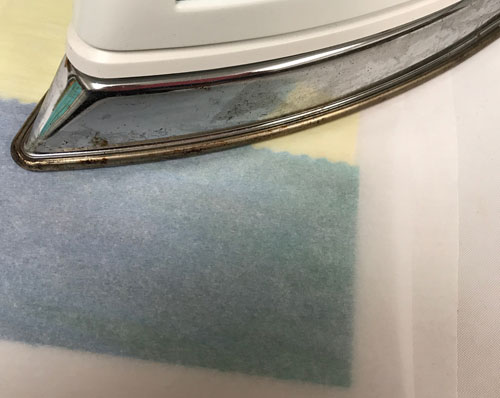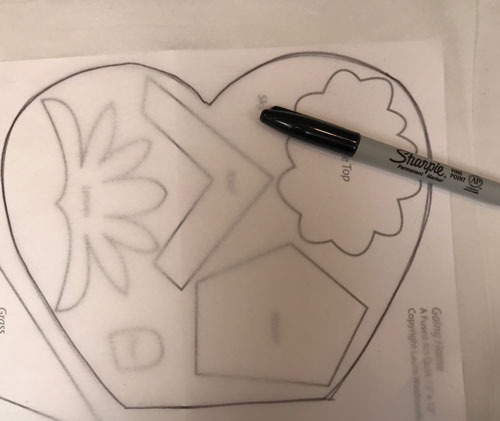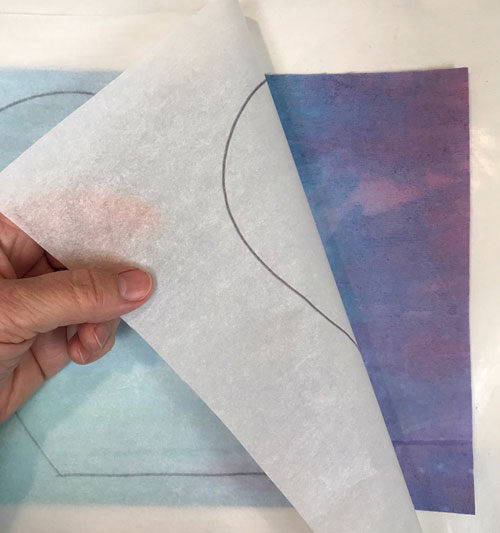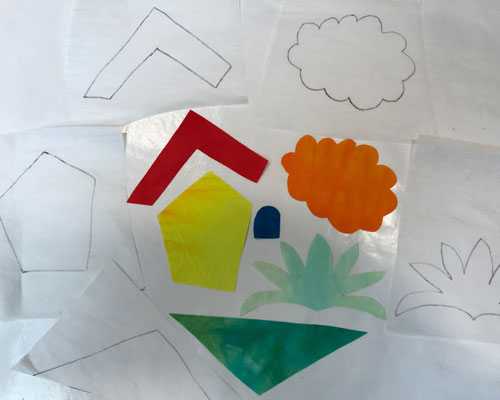Are all your fabrics fused? Have you transferred the pattern shapes and cut them out using the Miracle of Pattern Transfer?
Good! now we can move on to putting your parts together for the Home, Sweet Home project. This is also known as the fun part.
(Note that directions are first given here on the Artfabrik blog and then added to the Home, Sweet Home Tutorial page as we go.)
Step #8
- Center the sky onto the background fabrics about 2″ down from the top edge.
- Cover the sky with parchment paper or silicone release paper and fuse-tack into place.
- Remember fuse-tacking is exposing the fusible web to a short amount of heat, 5 seconds, from the iron (set at the cotton setting).
Step #9
- Place the house on the lower edge of the sky about 1″ in from the left edge.
- Place the roof on the top of the house and overlap the house shape about 1/8″.
- Place the door on the bottom edge of the house about 1/4″ in from the right edge.
- Cover the sky and house with paper and fuse-tack into place.
Step #10
- Trim 1/4″ from the long edge of the grass fabric using a pinking blade or pinking shears.
- Center the grass shape with the pinked side up about 1/4″ over the lower edge of the sky.
- Free cut 4 windows measuring about 1/2″ x 3/4″. Place the windows vertically on the house.
- Free cut a dot measuring about 1/2″ across. Place the dot on the peak of the house.
- Cover the house and grass with paper and fuse-tack into place.
Step #11
- Place the tree top onto the sky. Cover with paper and fuse-tack into place.
- Clean your iron if necessary. For this next step you can not use paper to cover the fabric. See: How to Clean an Iron
- Cut the tree trunk fabric on the bias to form 2 triangles. (Note: a bias cut fabric is cut at a 45 degree angle from the grain of the fabric or from corner to corner on a square piece of fabric to form 2 triangles.)
- Cut 1 strip measuring about 1/8″ wide and tapering to 1/ 2″ wide by 5″ long from the long or bias side of one of the triangles. Snip the 1/ 2″ wide end of the tree trunk into a curve.
- Fuse the tree trunk from the tree top to the grass by curving the trunk with one hand while fusing with the other.
Step #12
- Center the leaves on the lower point of the grass.
- Cut 6 triangles measuring about 1/2″ across by 1″ long to make the flowers.
- Place the flowers between the leaves. Cover the leaves and flowers with paper and fuse-tack into place.


